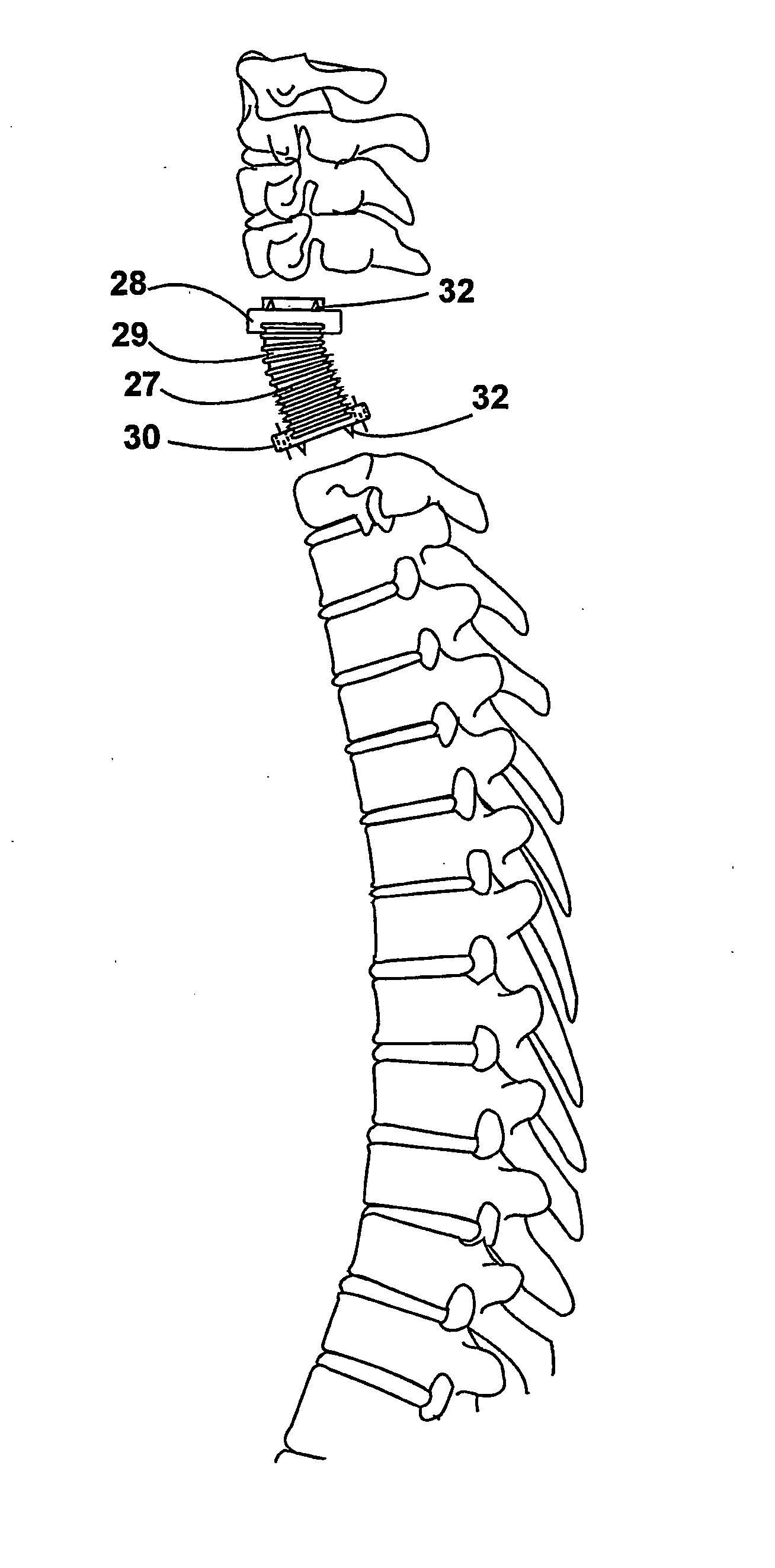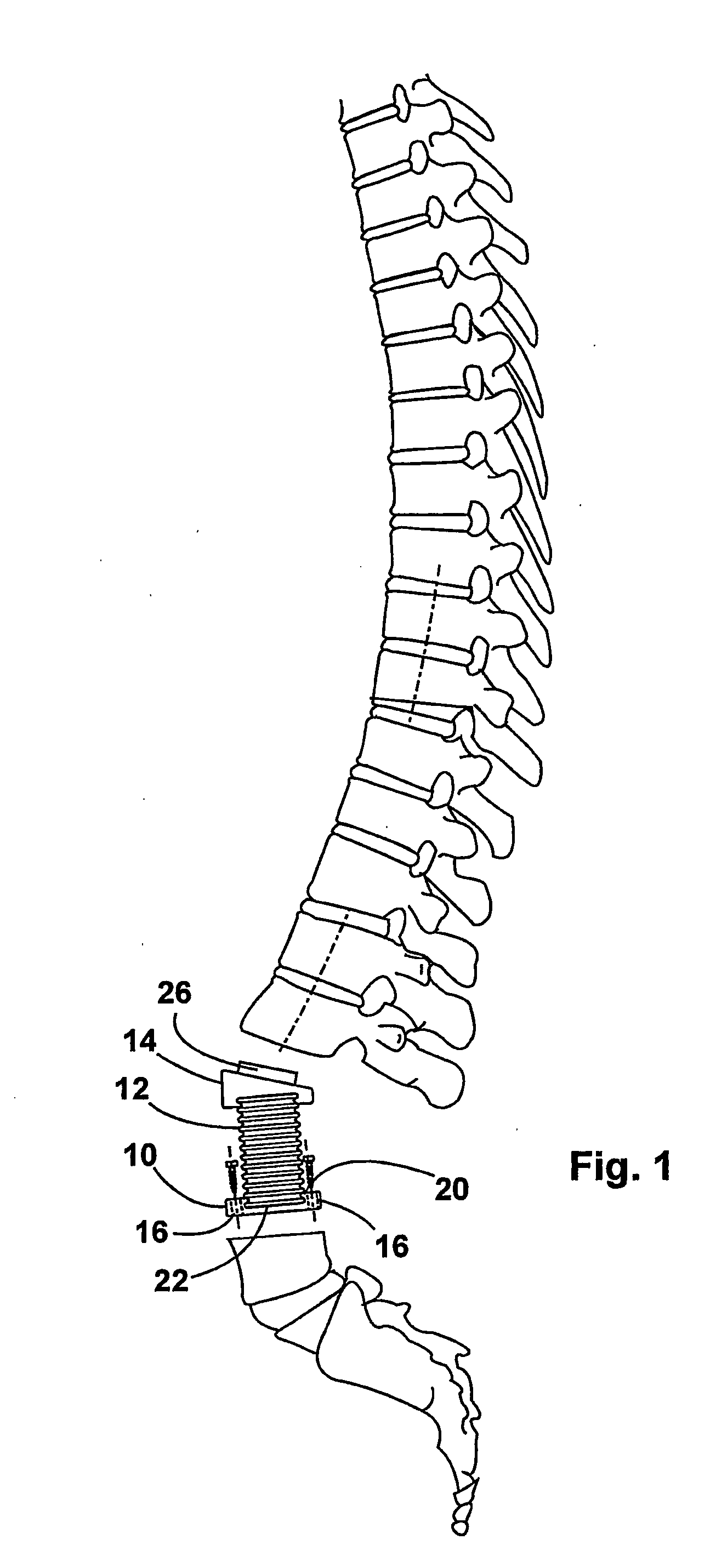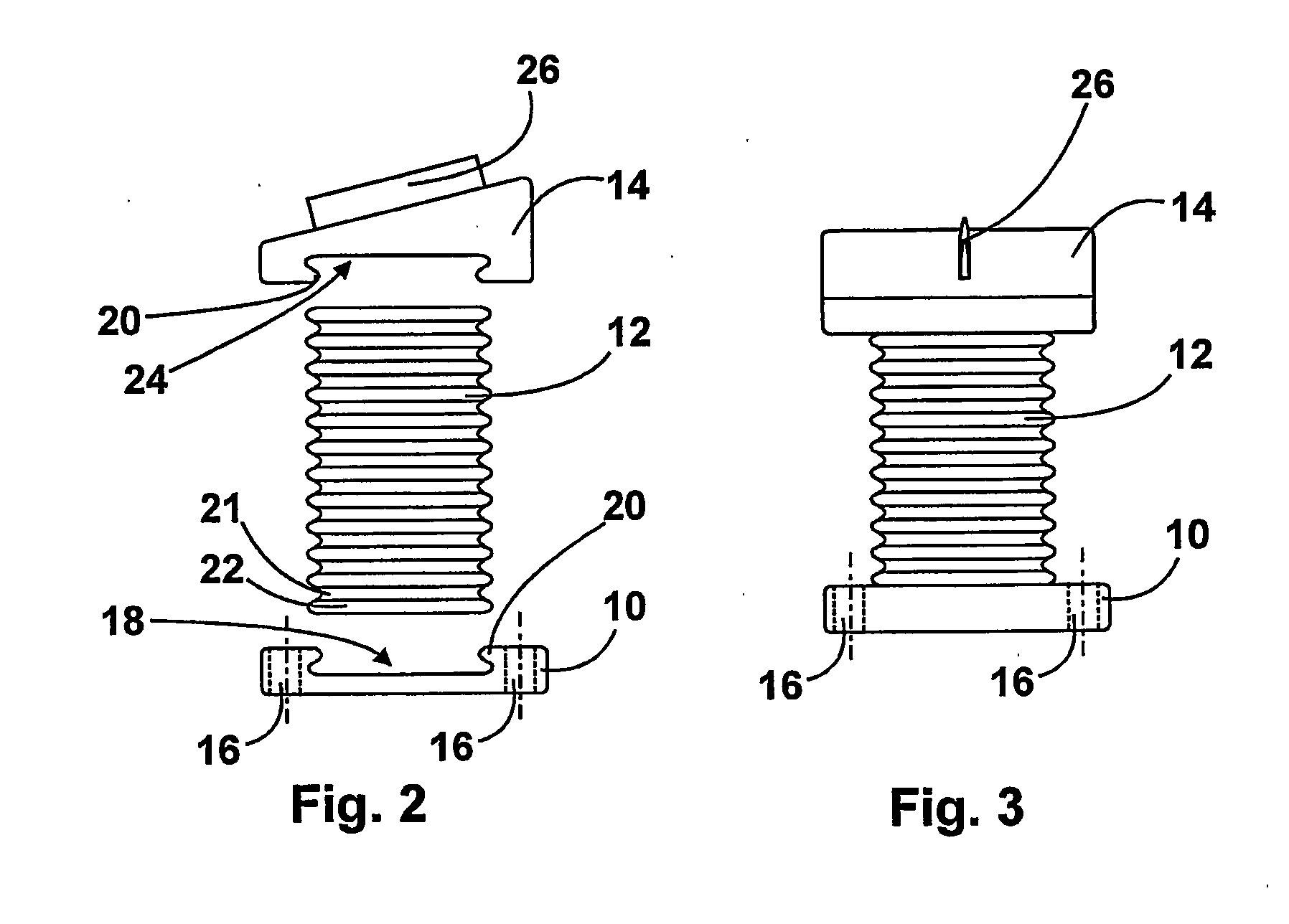Device for implanting in a human or animal vertebral column
a vertebral column and implant technology, applied in the field of human or animal spine implanting devices, can solve the problems of pain or other disabilities, high manufacturing cost, restricted free movement of patients provided with such implants, etc., and achieve the effect of low manufacturing cost and complete freedom of movement of the spin
- Summary
- Abstract
- Description
- Claims
- Application Information
AI Technical Summary
Benefits of technology
Problems solved by technology
Method used
Image
Examples
first embodiment
[0033]a device of the invention suitable for implantation into a human or animal spine as illustrated in the FIGS. 1 through 3 includes a base carrier 10 made of a rigid material, an elastic element configured to be an undulated bellows 12 and a top carrier 14. As best shown in FIG. 2, there are provided on the base carrier openings 16 for receiving a bone screw by means of which the base carrier 10 is fastened to the vertebral body. The bone screw is manufactured from a biomaterial that is slowly resorbed over time by the body, with the top carrier 14 and the base carrier 10 having become firmly secured to the vertebral body in the meantime.
[0034]The metallic undulated bellows 12 comprises an undulated outer contour, with discrete undulation troughs 21 and crests 22 annularly surrounding the undulated bellows 12. This undulated bellows 12 resembles for example an accordion hose. The base carrier 10 further possesses, on its side turned away from the vertebral body, a receiving port...
fourth embodiment
[0045]In the fourth embodiment illustrated in the FIGS. 9 and 10, an abutment 42 against which the uppermost undulation 44 comes to rest is formed in the receiving portion 24 provided on the top carrier 40. As a result, the undulated bellows 46 can be accurately positioned and mounting is facilitated since the surgeon is now capable of inserting the undulated bellows 46 into the top carrier 40 or into the base carrier 48 without having to care for other details. The abutment 42 is thereby implemented as a side wall of the top carrier 40 and possesses a receiving portion 24 the contour of which is configured to correspond to the contour of the undulation 44.
[0046]In a receiving portion 18 provided on the base part 48, there is also implemented an abutment 42 that corresponds to the abutment 42 of the top carrier 40. The abutment 42 of the base part 48 is however disposed exactly opposite the abutment of the top carrier 40 so that the two abutments 42 are virtually confronting each ot...
fifth embodiment
[0047]In the fifth embodiment illustrated in the FIGS. 11 and 12, two radially protruding pins 56, 58 are formed on a respective one of the uppermost and lowermost undulations 52, of the undulated bellows 50, said pins being insertable into corresponding recesses 60, 62 provided in the top carrier 64 and in the base carrier 66 respectively. The pins 56, 58 cooperate with the recesses 60, 62 to form a bayonet connection. This bayonet connection allows for fast and easy insertion of the undulated bellows 50 into the top carrier 64 or into the base carrier 66, with the pins 56, 58 being inserted into the recesses 60, 62. By pivoting the elastic element 50, the pins 56, 58 are caused to enter deep into the L-shaped recess 60, 62 where they get jammed since the recesses are configured to have a conical taper. By causing the bayonet socket to get jammed in the conical taper of the recesses 60, 62, the undulated bellows 50 is well locked in the top carrier 64 and / or in the base carrier 66 ...
PUM
| Property | Measurement | Unit |
|---|---|---|
| stress forces | aaaaa | aaaaa |
| stress forces | aaaaa | aaaaa |
| stress forces | aaaaa | aaaaa |
Abstract
Description
Claims
Application Information
 Login to View More
Login to View More - R&D
- Intellectual Property
- Life Sciences
- Materials
- Tech Scout
- Unparalleled Data Quality
- Higher Quality Content
- 60% Fewer Hallucinations
Browse by: Latest US Patents, China's latest patents, Technical Efficacy Thesaurus, Application Domain, Technology Topic, Popular Technical Reports.
© 2025 PatSnap. All rights reserved.Legal|Privacy policy|Modern Slavery Act Transparency Statement|Sitemap|About US| Contact US: help@patsnap.com



